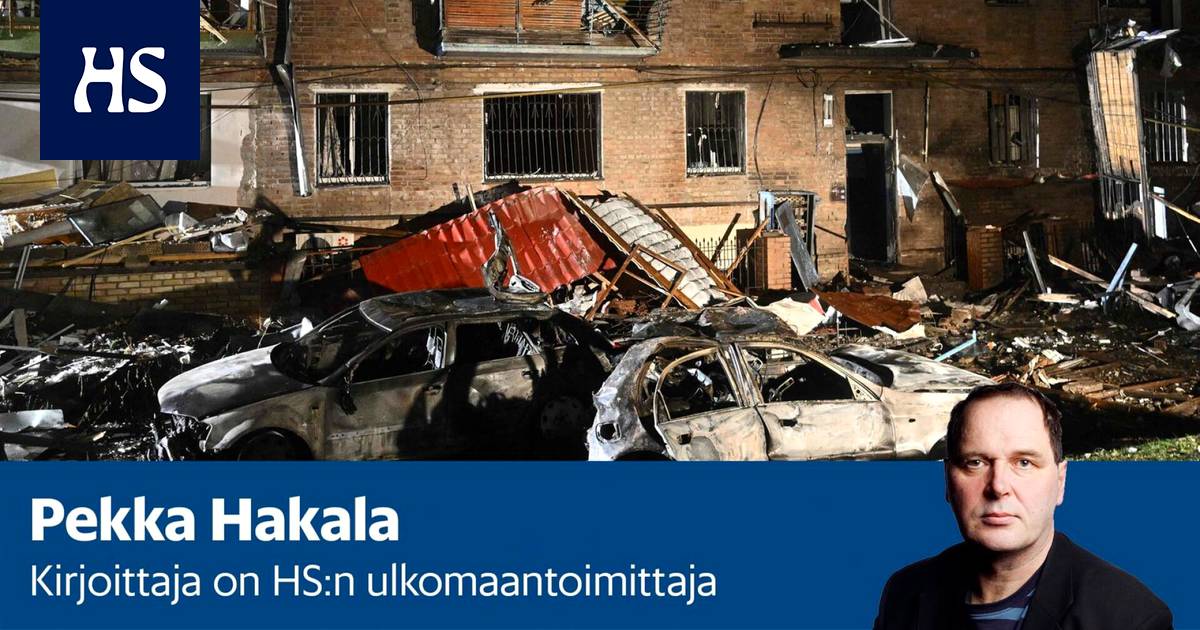Wednesday’s missile strikes were already the sixth wave of bombing against Ukraine’s energy system in six weeks. The general’s job is to make sure that the Russian army survives until spring, writes Pekka Hakala, HS’s foreign correspondent.
Russian Wednesday’s missile and rocket attacks on various parts of Ukraine cut off electricity in most of the country. In addition to Kyiv, a dozen large cities were without heating and electricity, and the interruption of electricity also led to the interruption of the distribution of tap water.
Repair work already started on Wednesday, and taps in Kiev, for example, started to get drinking water on Thursday, albeit at a lower pressure than normal.
It was already the sixth wave of missile and rocket attacks against Ukraine’s energy supply since the Russian general Even Sergei Surovik, 56, officially took command of the Ukrainian “special operation” on October 8. On the same day, the Kerch Strait bridge leading from Russia to Crimea was apparently damaged by a car bomb explosion.
Sergei Surovik had time to lead the Russian space forces in his fast-moving career, between commands in Syria and Ukraine.
First a wave of bombings directed at the energy sector followed two days after Surovikin’s appointment. The bombings, which began on October 10, continued for more than two days and destroyed the distribution of electricity, district heating and water in 14 provinces in Ukraine.
The capital city of Kyiv suffered the worst, where at least thermal and electric power plants number five and six were the targets. The first mentioned is located a few kilometers from the Maidan square in the center, the other on the border of the city of Kyiv and the surrounding Kyiv region on the east side of the city. The same power plants were the targets of attacks on Wednesday as well.
In October, two more waves of bombing followed, which Russia carried out on power plants and power lines on the 21st-22nd. on the last day of October and October.
The fourth wave of bombing was the biggest in terms of firepower. Russia did it on November 15, four days after Ukrainian troops marched into the city of Kherson. During the day, at least a hundred missiles were fired at Ukraine and, above all, at its power plants and power lines. In addition, Iranian suicide bombers were sent to the targets, among other things.
However, from Russia’s point of view, the costs remained greater than the benefits. With the help of the United States, Norway and Spain, Ukraine had received the first Nasams anti-aircraft systems, which Finland also has in use. The Ukrainian armed forces announced that they had repelled 77 Russian missiles.
So Surovikin’s Fifth Bombing Wave was remarkably cautious. It was aimed at Ukrainian gas plants and the Pivdenmaš missile factory in Dnipro. Explosions were also heard in several other cities.
Wednesday’s the destruction of the bombing wave was by far the worst so far, although the number of missiles fired may have fallen short of the October record. Armed Forces of Ukraine on Thursday morning on his Telegram channel according to the published summary, Russia fired 78 missiles and carried out “23 airstrikes”. Whether missiles were fired in these air attacks and whether they were included in the reported number of 78 missiles is not clear from the summary.
Ukraine said it had intercepted 51 out of a total of 70 Kalibr cruise missiles and in addition five Lancet suicide drones, of which a dozen were fired in total. Neither the Ukrainian nor the Russian sources spoke about ballistic missiles.
According to the Ukrainian General Staff, Russia also carried out 70 rocket launcher attacks on “military and civilian targets”. In Ukraine, Russia uses, among other things, heavy B 30 Smertch rocket launchers, which are capable of firing satellite-guided rockets intended for the destruction of industrial targets at a distance of 130 kilometers. So targets in southern and eastern Ukraine have been destroyed not only by missiles and drones, but also by rockets.
A Russian Telegram channel well informed about war events Rybar estimates that the damage is the result of a “cumulative effect”. In other words, Russia has re-bombed targets that Ukraine hastily repaired.
Surovik too has earned the nickname “General Armageddon” due to its relentless bombing in Syria. In Ukraine, he seems to have been tasked with freezing the Ukrainians into inaction, if not peace-loving.
At the same time, Surovik has organized his ground forces so that Russia would not have to withdraw from Ukraine during the winter in an uncontrolled manner. He announced the abandonment of Kherson even before the first wave of bombing in October.
At the same time, the soldiers of the mercenary company Wagner have been ordered to build barriers and fortifications behind the front lines in the Luhansk region. He will be the first to report on it British Military Intelligence.
This so-called “Wagner line” runs largely along the southern bank of the Donets River. Further south, it is being built about 15 kilometers east of the junction town of Bahmut, where there has been bloody fighting for months. The city of Severodonetsk, which Russia destroyed in the battles, remains on the northeast side of the line, which means that the general is preparing to leave the city in the hands of Ukraine if necessary.
to the Wagner line withdrawal would mean Russia retreating more than a hundred kilometers from the northern parts of the Luhansk region.
Together with the destruction of Ukraine’s energy system, this means that Russia’s war target is next spring. Surovikin’s task is to make sure that the Russian army survives the winter.
“The Russian military leadership is not capable of more than that right now,” he says Garnegie think tank Russian scientist Vladimir Frolov.
#Analysis #month #waves #bombing #Russias #general #freeze #Ukraine #ground







